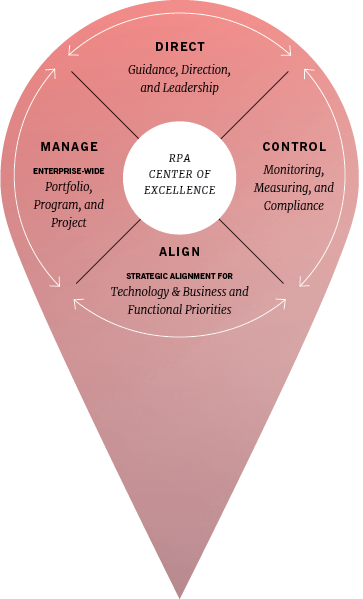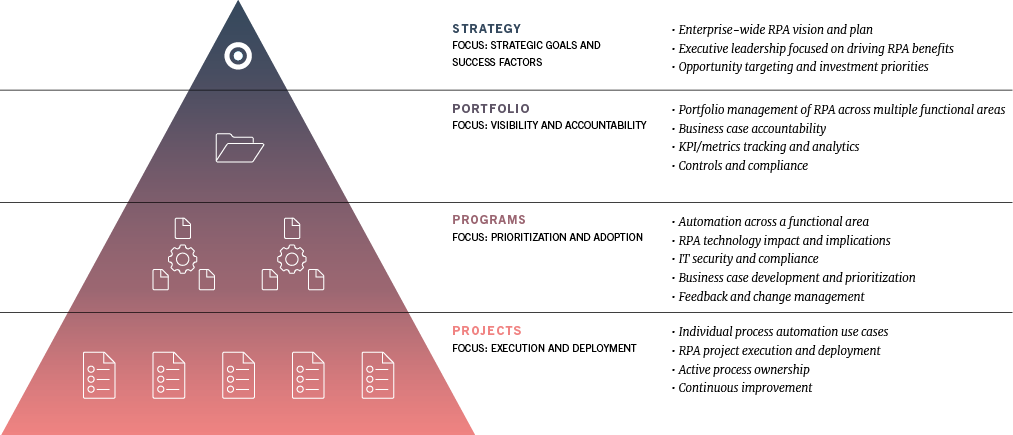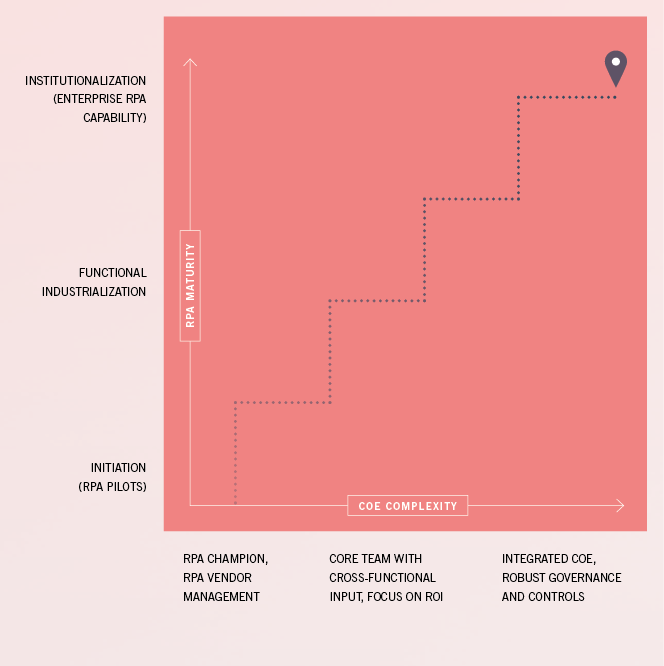Robotic process automation (RPA) has gained significant momentum in recent years. RPA refers to technology that automates business processes. Typically these are repetitive processes that have historically required human interaction. The ability to reduce costs and drive revenue has led many businesses to jump into the world of RPA.
However, as with many things, failing to plan for the road ahead can be a costly oversight. No matter the size or scope of the RPA efforts or where your organization lies along the RPA journey, getting the governance framework right will make sure your RPA initiatives are effective, drive efficiency, and create the right value.
If you live in Atlanta, you are likely more familiar than you care to be with Interstate 85. As one of the busiest highways in Atlanta, it not only allows more than 5 million residents to scurry from one corner of the city to another, it is also critical to the livelihood of businesses that line the highway through the heart of the city.
On March 30, 2017, a 92-foot section of I-85 collapsed in a massive fire that started under a highway bridge. What happened in the aftermath could have driven the city of Atlanta collectively mad as it faced the “carmageddon.” The city could have just jumped in with a laundry list of repairs, an assortment of contractors, and competing viewpoints on how best to fix the highway.
Fortunately, the city quickly aligned on an incentive-based approach, prioritized the construction tasks, and pointed a wide variety of public and private stakeholders in the same direction through communication and buy-in.
As a result, Atlanta had its highway back in little more than a month—nearly two months ahead of schedule! The chances things would end as well as they did were slim, yet we can attribute the success to good governance processes the city had put in place before embarking on the project.
Companies seeking to harness the benefits of RPA should look to emulate some of these same governance processes to ensure a smooth road ahead. So, what does good RPA governance look like?
RPA Center of Excellence
RPA governance is about prioritization, accountability, and risk mitigation. Companies who implement an RPA governance framework will ensure that an organization’s strategy and vision for RPA deployment are:
- Directed by the right people, tools, and technology.
- Controlled by the appropriate metrics to avoid risk.
- Aligned to strategic imperatives of the business.
- Managed and executed with full visibility and accountability.
The concept of an RPA Center of Excellence can keep companies on the road to success by ensuring a structured approach to RPA in contrast to more opportunistic implementations across the organization.

Center of Excellence

Strategy
Portfolio
Visibility into RPA efforts across the organization is necessary not only to avoid potential potholes, but to let the rest of the organization know where those potholes are. At the portfolio level, the Center of Excellence is tracking and challenging accountability for the business case (whether on the cost side or the revenue side). If RPA is touching business-critical, customer-facing, or regulatory processes, even more scrutiny is required.
Program
If the portfolio level is about accountability, then the program level is about making sure leadership is prioritizing the right opportunities and managing the various effects of RPA on the organization’s technology landscape functional processes. At the program level, the Center of Excellence is responsible for communicating the changes to existing processes throughout the organization, as well as soliciting stakeholder feedback about the positive or negative effects of the RPA efforts.
Project
Finally, the rubber meets the road. Because the strategy and vision are aligned with a strong, prioritized business case, leadership can actually execute RPA. With both accountability and visibility across RPA activities established within the center of excellence, leaders can execute and deploy individual use cases within functions.
Mitigating Risk Without Slowing Down
The complexity of an RPA Center of Excellence should take into consideration the amount of risk the business is exposed to as a result of embedding RPA into an organization’s processes. In general, the higher the impact of the following elements, the more robust and formal the center of excellence should be.
Cost
Projects that incur a high cost need to have greater governance in order to drive a positive bottom line.
Customer Value
Projects that have a customer touchpoint need to drive a consistent outcome to create a positive customer experience.
Organizational Impact
Projects that significantly impact the organization, whether through process change or otherwise, require new roles/responsibilities.
Cross-Functional touchpoints
Projects that involve multiple functions, brands, or business units require significant coordination and communication.
Compliance
Projects that have regulatory or compliance-related metrics require more structured governance.

Recognizing the organization’s progress on the journey toward RPA maturity also helps define the level of scope and sophistication of the center of excellence. Even if you’re a small company just looking to explore some pilot RPA projects to test the waters, many of these governance principles may still apply, albeit on a smaller scale.
There are a number of ways to organize and stand up an RPA center of excellence. Focusing on the organization’s RPA strategy, while building in controls and an emphasis on accountability, will pave the way for a smooth and successful RPA journey.
